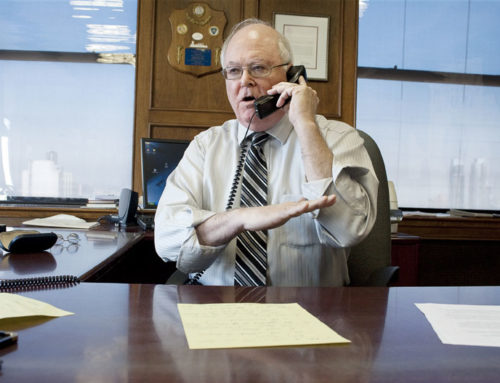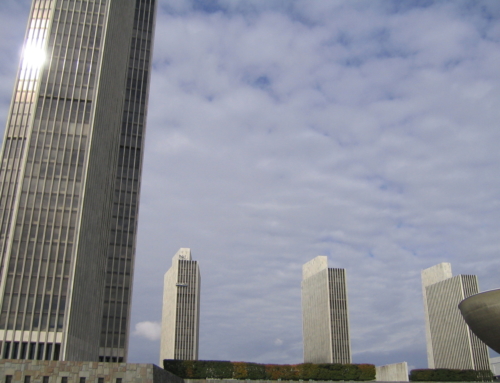Philip Shenon, Jesus Wept: Seven Popes and the Battle for the Soul of the Catholic Church (Knopf)
Every now and then along comes a book on the Catholic Church that causes quite a stir. This is certainly true of Jesus Wept: Seven Popes and the Battle for the Soul of the Catholic Church. Written by former New York Times reporter Philip Shenon, it has been hailed by most left-wing critics of the Church as must-read. Shenon also covered the clergy sexual abuse scandal for the Daily Beast, a radical opinion website.
The book is strewn with inaccuracies, some of which are minor (he gets Vatican departments confused), others of which are very serious (e.g., his rendering of historical events). The fact that he lists over a dozen editors and colleagues at Knopf, which is a distinguished publishing house, makes his blunders all the more mindboggling. But the buck stops at the top. Shenon is ultimately to blame.
The first error begins after the dedication page, before the text begins. Shenon lists three quotes, one of which is from Pope Francis. “Who am I to judge?” That is not what he said. But it fits the narrative of Church critics who have misquoted the pope so that they can make the case that he was commenting on homosexuality. Not true. The accurate quote reads, “Who am I to judge him.” The pronoun changes everything—he was referring to one particular priest who had accusations of abuse made against him.
Shenon can be fair. He credits Pope John Paul II and Pope Benedict XVI for speaking with compassion for homosexuals suffering from AIDS. But even there he flubs when he adds, “even as they rejected their sexual orientation.” No, they rejected the behaviors that they engage in, not their status as homosexuals.
“The Vatican had always portrayed the so-called doctrine of priestly celibacy as eternal and irreversible, but it was neither. It is not demanded in the Gospels, nor was it as a way of life followed by the twelve apostles.” The second sentence is accurate but the first is not.
Leaving aside the snide reference to “the so-called” doctrine, priestly celibacy is not a doctrine of the Catholic Church. It is a discipline, one that was not invoked in the early Church and can be reversed today. Not to know the difference between a doctrine and a discipline would be astounding for a college student studying theology, never mind an author who professes to be an expert.
A lot can be understood about anyone who writes a book about the Catholic Church by learning who he regards as a hero or who he sees as a villain. Shenon likes dissidents, not traditionalists. For example, he admires Sister Theresa Kane and the Leadership Conference of Women Religious, precisely because they struggle (that’s putting it mildly) with a host of Church teachings.
Similarly, he likes Hans Küng, the embittered ex-Catholic theologian. He contrasts him favorably to Pope John Paul II, the brilliant philosopher whose contribution to the Catholic Church made him a saint. After the first year of John Paul’s pontificate, Küng took aim at him in the New York Times, faulting him for becoming “the darling of the masses and the superstar of the news media…already a sort of living cult figure for some Roman Catholics, well nigh unto something like a new messiah for our time.” This is more than condescending—it reeks of jealously.
Shenon’s grasp of Church history is appalling. He speaks about “the imprisonment of Galileo in the seventeenth century because he rejected the church’s view that the sun rotated around the earth.” The fact is Galileo was never imprisoned. He spent his time under “house arrest” in an apartment in a Vatican palace, with a servant. More important, his work was initially praised by the Catholic Church: Pope Urban VIII bestowed on him many gifts and medals.
Galileo did not get into trouble because of his ideas; after all, his ideas were taken from Copernicus, a priest who was never punished (on the contrary, Copernicus’s theory found a receptive audience with Pope Clement VII). What got him into trouble was presenting his unverified claims as fact—that was the heresy.
Shenon writes that during the Inquisition, “people accused of heresy were regularly burned at the stake” on Vatican orders. Wrong again. It was the secular authorities—not the Church’s authorities—that burned heretics. In fact, the Church saw heretics as lost sheep who needed to be brought back into the fold. Those suspected of heresy were subjected to an inquiry, hence the term inquisition. But the secular authorities saw heresy as treason; anyone who questioned royal authority, or who in any way challenged the idea that kingship was God-given, was guilty of a capital offense. Shenon has swallowed the moonshine of the “Black Legend.”
The Church’s response to the Holocaust is also badly misrepresented by Shenon. The old canard about Pope Pius XII being “silent”—it has been thoroughly debunked—surfaces again. Not only did the New York Times commend Pius in two editorials for not being silent at that time, the Vatican archives underscore his heroics.
What Shenon says about Mother Teresa is despicable. He says that “Her private correspondence, made public after her death in 1997, showed she was tormented by uncertainty about the existence of heaven—and even of God. She felt no presence of God whatsoever in her life.”
To be sure, Mother Teresa confessed to having “dark nights,” times when she no longer felt the presence of Jesus in her life. When this story broke in 2007, I wrote to Father Brian Kolodiejchuk, her advocate for sainthood, about this issue.
He agreed with my comment, made on TV to Mother Teresa critic Christopher Hitchens, that “there is a profound difference between ‘feeling’ and ‘believing.'” He added, “Though Mother Teresa did not feel Jesus’ presence in the Eucharist, her firm belief in the Real Presence cannot be questioned….” He offered many examples, taken from her letters and behavior, to buttress this point.
On the issue of sexuality, Shenon is just as delinquent. He accuses Pope Paul VI and Pope Benedict XVI of being opposed to “sexual freedom.” What Paul was railing against was the sexual exploitation of women by men—that would make him a feminist in some circles—and what Benedict was complaining about was libertinism, or sexual license. The real giveaway here is Shenon’s bewilderment with Benedict for opposing sex-reassignment surgery. If this has to be explained, the man is clueless.
Similarly, Shenon cites the criticism that Benedict received from gay activists for his comments on homosexuality. Of course they would deny what Benedict said, which is that homosexuals have a “strong tendency toward an intrinsic moral evil.” This may sound harsh to some, but telling the truth is more important than appeasing people, especially when doing so would be dishonest.
Shenon finds fault with the Vatican for sounding the alarms over a book, Human Sexuality: New Directions in American Catholic Thought. He says the book “gently questioned church teachings on birth control, homosexuality, and masturbation.” Not quite.
The author, Father Anthony Kosnik, was a member of the Catholic Coalition for Gay Civil Rights and an avid dissenter from Church teachings on sexuality. He said it was important not to accept what the Church teaches about homosexuality, maintaining that we need to see homosexual acts in morally neutral terms. He even went so far as to question the validity of condemning bestiality.
There was nothing “gentle” about this—he offered a perverse understanding of sexuality. Worse, his book was required reading in some seminaries in the 1970s and 1980s.
Shenon’s interpretation of events involving miscreant priests is easily refuted.
Throughout the book, Shenon writes about pedophilia when discussing clergy sexual abuse. In fact, pedophile priests accounted for less than four percent of the molestation of minors—eight-in-ten cases of abuse were committed by homosexuals. To contend otherwise is simply a cover up of gay crimes.
It does not matter that many homosexual priests who abused postpubescent males did not identify as homosexuals. Self-identification is not dispositive. To wit: when adult men have sexual relationships with adolescent males, they are engaging in homosexuality. It is intellectually dishonest to claim otherwise.
Shenon even labels Father Marcial Maciel Degollado a pedophile. This is astonishing. There is no wiggle room for him on this. Maciel was a drug-addicted predator who fathered several children, raped at least sixty postpubescent boys, and had sex with at least twenty seminarians. Shenon has no idea what he is talking about.
He mentions the case of Peter Hullermann in 1980 who was transferred by Cardinal Joseph Ratzinger’s staff (later Pope Benedict XVI) from the German city of Essen to Munich for psychiatric care after he admitted to molesting a postpubescent boy. He was then allowed to continue his duties as a priest. He went on to molest more boys.
Here is what Shenon left out. At the time, counseling sexual offenders was considered the right thing to do—not to punish them—and this was the considered judgment of those who identified as liberals. Everyone could be saved by therapy, they said. They were wrong, but this was the conventional wisdom. In any event, it was Ratzinger’s deputy who arranged Hullermann’s transfer to a new parish. There is no evidence that the future pope approved it.
Cardinal Ratzinger, in his Vatican capacity under Pope John Paul II, is also accused of mishandling the case of Stephen Kiesle.
In 1978, Kiesle was convicted of sexually abusing two boys in California and was suspended by his local church. Cardinal Ratzinger said he could not defrock Kiesle because no one under 40 could be laicized, and the priest was in his thirties. However, the day before his 40th birthday, he was defrocked.
Shenon hammers Ratzinger again for his handling of a Milwaukee priest, Lawrence Murphy. No one doubts he was wicked: he abused as many as 200 deaf boys extending back to the 1950s. What can be contested—indeed refuted—is the charge that Ratzinger bore some of the blame.
Though Murphy’s crimes took place in the 1950s, none of the families contacted the civil authorities until the mid-1970s. After a police investigation, the case was dropped. Fast forward to 1996—that was the first time the Vatican learned of the case. Ratzinger could have simply dropped the case given that the statute of limitations had expired. But he didn’t: he ordered an investigation. While the inquiry was proceeding, Murphy died.
In the beginning of his book, Shenon correctly notes that the enemies of Pope Benedict XVI called him, “God’s Rottweiler.” In 2012, the New York Times called me “The Rottweiler’s Rottweiler.” I wear that nickname as a badge of honor. I will always defend him from those who seek to malign him.
The Catholic Church has a long history of accomplishments. It also has its dirty laundry. When assessing any institution, it is important to get the facts straight. What Philip Shenon has done is a disgrace. He seeks to discredit the Church, but his sloppy—even horrendous—scholarship renders him an unserious critic.








